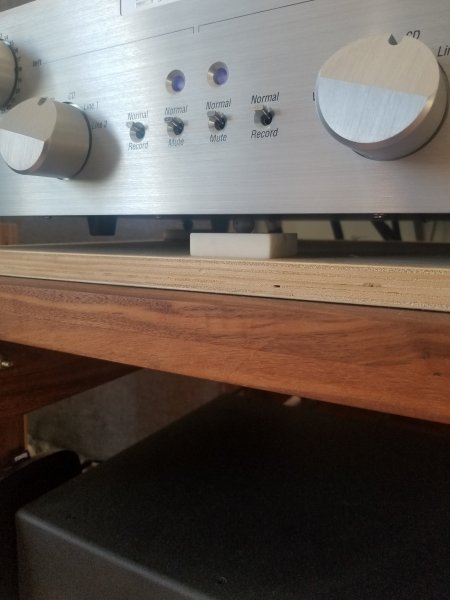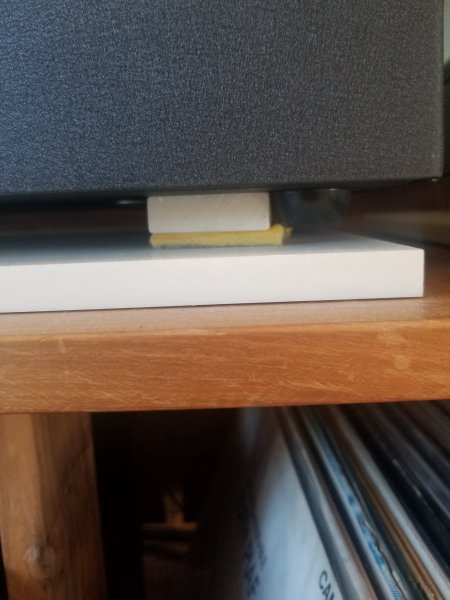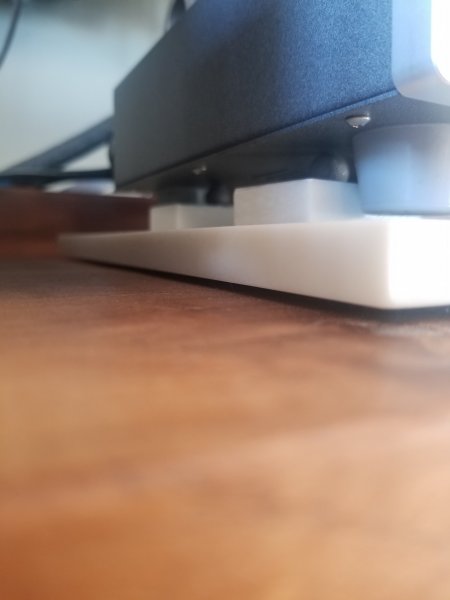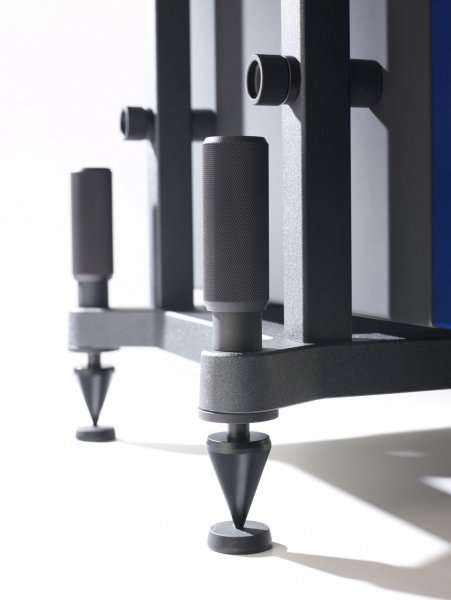The vibration isolation methodology has had a dominating presence in high-end audio for 30 years or more. Yet, a very recent thread in the General Forums section ended with someone stating vibration isolation remedies and results being all over the map. I agreed with his portrayal and also suggested a few possible reasons including perhaps the vibration isolation methodology's principles are also all over the map and perhaps our understanding about vibration mgmt is far less than we think when it should seemingly be elementary. Then there's also been a few recent "the room's the most important component" threads and believe or not many of these controversies are intertwined.
Anyway, that got me thinking. The vibration isolation methodology presumably has a few tenets and if such tenets exist, no doubt its first tenet would have to be something like,
"Of the three primary sources of vibrations, floor-borne vibrations induce the greatest sonic harm and therefore it is paramount that we isolate our sensitive instruments from this most harmful source of unwanted energy."
I've included an in-room video recording containing snippets exhibiting various types of authoritative bass where the in-room volume levels ranged between 103 - 106db (note the in-room gestalt is far greater than what's exhibited in the recording). In the video you should also notice that the distance between my rack and my single 15" subwoofer is a mere 24-inches between closest points making superior contact with the sub-flooring and the rack and sub even share the same floor joist and maybe even the same sub-floor plywood panel.
I should also note that my components are so tightly coupled to their shelves with previously unheard of insane levels of compressive forces as is each shelf to the rack's base. For example. There is roughly 1000 lbs. of compressive force just on the amps toward its shelf. IOW, metal tightly coupled against metal with no intended isolation anywhere. No doubt, the death knell for my playback system if indeed floor-borne vibrations induce the most sonic harm, right?
Given my configuration and assuming floor-borne vibrations induce the most sonic harm,
1. Then why aren't any of these recording snippets wreaking even a hint of perceived sonic havoc on the playback presentation especially with in-room recording volume levels in the 103-106db range?
2. Given that my metal components are without doubt the most tightly coupled of any components to my all steel racking system which in turn is tightly coupled to the sub-flooring exactly as the subwoofer using the exact same coupling method and products (my own) and given these same listening volume levels, shouldn't my playback system experience more ill-effects of nasty floor-borne vibrations than perhaps every other playback system in the world?
3. Better yet, why aren't the distortions and playback fidelity going up and down in opposition to one another like yo-yo's before and after every significant deep bass note? Wouldn't that be indisputable evidence that floor-borne vibrations induce at least some sonic harm? Especially since many isolationists purport that lowest frequencies induce the most harm?
Yet, no perceivable audible evidence exists in this video or perhaps anywhere else and as such I can only think of three distinct but still inter-related possibilities:
1. Floor-borne vibrations are inconsequential to all of us.
2. One vibration mgmt methodology is based perhaps entirely on folklore and is so off-base it's first tenet or principle isn't even in the ball park.
3. Floor-borne vibrations induce little or no sonic harm but somebody decades ago experienced their 400 lbs. party guest dancing in front of their turntable causing the stylus to jump 14 grooves and confused vibrations with shock and impact. An entirely different problem requiring an entirely different remedy that's entirely outside the scope of vibration mgmt but still that mindset has prevailed to this very day. See #2 above.
So if I can demonstrate beyond reasonable doubt (as I think I have here) that floor-borne vibrations are inconsequential, some obvious questions might be,
1. Why might so many others claim their vibration isolation products are providing sonic benefits by isolating components and/or speakers from floor-borne vibrations?
2. If the isolationist has been addressing the less harmful source of vibrations what might be happening with the most harmful vibrations?
3. Given our concerns are limited to 3 primary sources of vibrations, if I have successfully demonstrated here that floor-borne vibrations are inconsequential, how much closer might the vibration isolationist now be toward discovering the true source of vibrations that induces far and away the most sonic harm?
4. Haven't people claimed they can measure differences based on their newly installed products that isolate from the floor?
To which the answers should be somewhat obvious to the open-minded.
I can appreciate how all this goes against the grain of everything we think we know about vibration mgmt. In fact, I entertained entitling this thread "Death by Firing Squad." because I've no doubt I'm gonna' take some serious heat for this.
So why even bother sharing any of this? Well, I've tried sharing some of this numerous times before, but without in-room recordings, it was just my word going up against others' lifelong beliefs. I share primarily for performance reasons but also because high-end audio is just loaded with folklore. A number of subject matters we take at face value without researching and often times we're left chasing windmills for decades even. Once this worst folklore is conquered, then others should start to fall like dominos in parallel. But mostly because to the best of my knowledge every last high-end audio playback system suffers immensely from a severe and universal performance-limiting governor or glass ceiling which is caused almost solely by inferior vibration mgmt methods. And though some playback systems might eventually bump up against that glass ceiling and even push it up a notch or two, it's still impossible to obliterate it. Except when employing superior and extreme forms of vibration mgmt methods, namely resonant energy transfer.
IOW, this very subject that so many seem so enamored with lately, dabbling with, consider themselves experts with, and are so pleased with the results has been the very thing that keeps our components operating far closer to their base performance levels rather than their optimal performance levels. If any of you are enjoying sonic benefits from your supposed vibration isolation endeavors where even its first principle falls flat on its face, imagine how much more you just might benefit with just a slight change in direction and mindset.
But this is why isolation products remain accessories and can never be anything but.
Just sayin,











